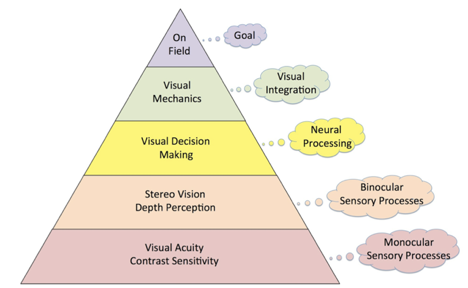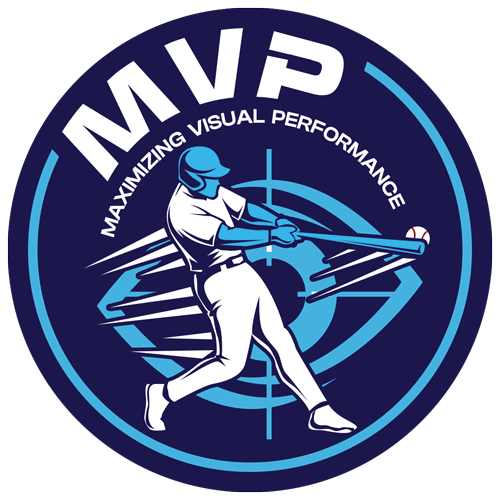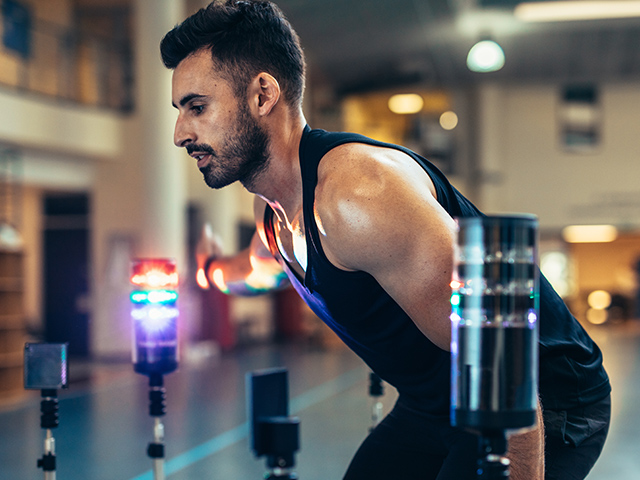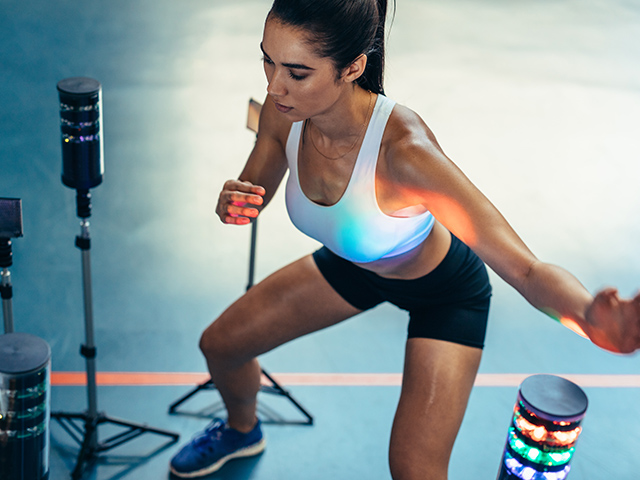
A visual performance assessment is based on the well-established Sports Vision Pyramid. Since the strength of a pyramid depends on the width of its base, we begin at the bottom and work our way upward.
1. Visual acuity and contrast sensitivity – We first evaluate each eye’s visual acuity and contrast sensitivity. Because standard Snellen charts are not effective for elite athletes, we use a patented testing system designed specifically for high-level vision, called the AVTS system. This method simultaneously measures target size, target contrast, and presentation time, providing a complete picture of how each eye functions when viewing small, low-contrast, and fast-moving targets.
2. Binocular vision – Next, we assess how well the two eyes work together, focusing on depth perception and stereovision.
3. Processing speed and decision-making – At the next level, we test how quickly the athlete can process visual information and decide whether to act on it. This stage includes evaluating the ability to track multiple objects moving in three-dimensional space, as well as testing visual concentration to determine whether the athlete is easily distracted by external stimuli.
4. Visual-motor integration – The fourth level of the pyramid examines visual mechanics, or how effectively the arms and legs respond to visual information and the decision to act. For example, should a batter swing at a pitch, or should a soccer player attempt a shot on goal or pass to a teammate?
5. On-field performance – When all levels of the pyramid are optimized, the athlete is best positioned to achieve peak performance in competition.




